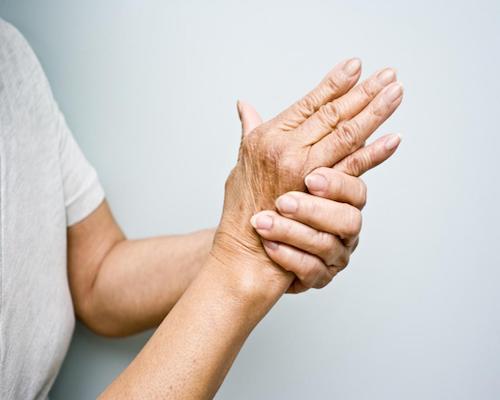One of the common types of arthritis is osteoarthritis; a painful condition that can affect the joints, especially the hips, knees, neck, lower back, or hands and feet.
New Delhi, October 11, 2018 : Representational Image
Arthritis is inflammation of the joints which affects the movement. The urban population has become increasingly sedentary, resulting in poorer muscle mass and bone strength. We are now faced with a modern epidemic where prevalence of arthritis (especially knee arthritis) has become very common in men and women post a certain age. This age related arthritis which is by far the most common type of arthritis is called osteoarthritis.
In India, osteoarthritis occurs in the age of 55-60. Not only is the patient profile of those suffering from arthritis in the subcontinent, getting younger but they also tend to have much more severe arthritis with more deformities and disabilities than earlier generations.
Osteoporosis and osteoarthritis are sometimes mistaken for one another. While osteoarthritis refers to degeneration of joints, osteoporosis refers to the loss of bone mass that raises the risk of fracture.
Osteoporosis is known as a silent disease because it can progress undetected for many years without symptoms until a fracture occurs. Osteoporosis is a painless condition which becomes painful if someone experiences a broken bone or fracture.
One of the common types of arthritis is osteoarthritis; a painful condition that can affect the joints, especially the hips, knees, neck, lower back, or hands and feet. When osteoarthritis develops in a joint the cartilage (the soft tissue that protects the surfaces of the bone) begins to thin and roughen. This loss of a protective cushion between the ends of the bones can cause them to rub together and result in joint damage.
SYMPTOMS OF ARTHRITIS
Depending on the type of arthritis you have, symptoms may include pain, stiffness, swelling, redness and decreased range of motion.
CAUSES OF ARTHRITIS
The increasing prevalence of arthritis and its crippling effects are related to the changes in the lifestyle and the diet in the Indian populace.
- The urban Indian is walking a lot less than his/her ancestors and the amount of physical activity has also decreased. Women are more affected due to various factors, including decreasing physical activity and less muscle mass.
- The most common joint affected by arthritis is the joint. The knees are weight bearing joints, largely driven by a group of muscles in front of the thighs, the quadriceps. These muscles weaken quite rapidly due to inactivity and long periods of sitting. Weakness of these muscles usually increases arthritis pain which further deteriorate these muscles.
- The inactivity also contributes to obesity which is one of the prime reasons for the aggravation of arthritis.
The cumulative affect deprives patients, their ability to walk, conduct activities of daily living and enjoy life in general. A more sinister effect is on the general health of a patient due to this decreased mobility leading to poorer cardio – vascular health, and worsening diabetes.
HOW TO PREVENT ARTHRITIS?
Arthritis is part of the ageing process of life, but with the correct strategies and the right lifestyle choices the impact and disability from arthritis can be reduced.
- Foundation of good lifestyle is laid in childhood. A good lifestyle in the younger years will extend youthfulness to later years. A good diet and regular exercise should help maintain and build good muscle and bone volume.
- The first step in dealing with arthritis is strategies to lose weight without losing muscle. This can be achieved by cutting carbohydrates and trans-fats and maintaining a reasonable protein intake.
- People start having signs of arthritis in joints in their fifties even though they may remain unaffected by it. However, obesity and weak thigh muscles pronounce the symptoms of arthritis. Regular whole body exercise, exercises to build leg muscles and maintain joint flexibility are therapeutic.
- Contrary to popular myth, increasing physical activity in early arthritis actually helps, and does not wear out the knees. Increasing amount of physical activity apart from exercise hours (called Non Exercise Activity Thermogenesis NEAT) has also show to improve health.
- Focus on maintaining good mental wellbeing and harmony is also critical. There are direct physical consequences of unrestrained stress and simultaneously painful joints themselves are an important source of stress.
The Author of this article is Dr. Gaurav Rathore, Associate Director, Institute of Orthopedics, Jaypee Hospita, Noida







